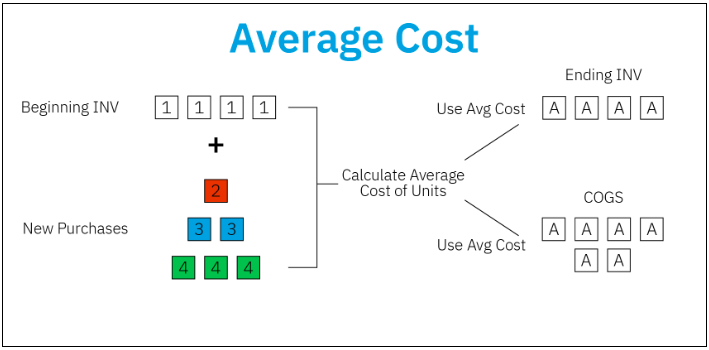
One way to make life easier while giving you better inventory accounting is weighted average costing. Let’s examine the weighted average costing method and how this feature can benefit your inventory management.
Newsletter sign up
"*" indicates required fields
What is Weighted Average Costing?
The weighted average costing methodology is considered by most to be the best way to calculate the valuation of inventory stock. The method pinpoints the average cost of all the company’s inventory materials by assessing the costs of individual units and the number of units that are currently stocked. The formula is quite simple, you divide the cost of these goods by the units that are ready to be sold. But of course, the software does this for you once configured to your products/materials.
Accounting Software like Accounting Seed takes this method to the next level through the perpetual average cost function. The perpetual average cost method generates the weighted average cost continually as new products are incorporated into the inventory.
Perpetual Average Cost Function
Perpetual Average Cost method complies with the main accounting standards, including International Financial Reporting Standards (IFRS) and the U.S. Generally Accepted Accounting Principles (GAAP). The use of weighted average cost provides the company with a better, more accurate valuation of its inventory valuation. Here’s the calculation:

For examples and more details on calculations, feature settings, and additional benefits, check out our relevant Knowledge Base article, Inventory Valuation Using Weighted Cost Average on Accounting Seed.

4 Weighted Average Costing Method Benefits
Inventory management software thrives with efficiency, automation, and minimal legwork. Your time is better served managing operations than toiling with the inventory. The weighted average costing method gives you the results you need faster and more accurately. Here are 4 key benefits of weighted average costing (also called average cost) features.
1. Less Legwork for Inventory Management
Weighted average costing eliminates a lot of extraneous manual labor in managing the overall inventory. Besides being easy to set up, the feature lets you define the average prices of the units in stock without the pain of tracing back to the original cost of each item. This also makes purchasing the appropriate amount a breeze. In Accounting Seed, default purchase prices can be set up to be vendor-specific or non-vendor specific to make it even easier.
2. Faster Calculations – More Data Sooner
Using an average simplifies the calculations and record keeping needed for maintaining the inventory. This makes the process faster to account for! This is because weighted average costing doesn’t require multiple steps. Once you calculate the weighted average cost of the product in question, that’s it! Using the perpetual methodology, the average is recalculated when new products are added to the inventory.
3. Real-time Inventory Visibility
Weighted average cost inventory valuation gives you and your team better real-time visibility into profitability and inventory cost. When there are large volumes of items, average cost is superior to other valuation methods. This is particularly so when the items are indistinguishable from one another or when tracking individual items would be very difficult or time-consuming. At the same time, you’ll be able to more easily see the performance of key products and examine the resulting finances associated with them.
4. Consistent Inventory Valuation
Weighted average costing ensures that your products remain documented and accounted for in the most consistent way possible, and with no extra manual labor. After product costs are calculated, these set amounts can be used throughout all stock units in your inventory. This ensures that amounts won’t get mixed up or that there is duplicate data. Instead, your stock and inventory accounting is updated at all times. Because of this functionality, planning inventory expenses can be done far more efficiently.
Master your Inventory Management with Accounting Seed
In addition to having the weighted average/perpetual average cost feature, Accounting Seed’s flexible inventory management control features give you a customized solution to fully master your inventory. Our compliment of inventory management features include:
- Product bundling (kitting)
- Serialized and non-serialized inventory
- Multi-warehouse, multi-location environments
- Historical Inventory balance reporting
- Build and stock finished good inventory from raw materials
Ready to make inventory control easier while having a better way to pinpoint and manage those product costs? Sign up for a free, custom demo today!
For more helpful accounting resources, read on:
See Accounting Seed in action
Get a close-up view of how accounting on Salesforce can eliminate the need for costly integrations—and silos of mismatched information—by sharing the same database as your CRM.



